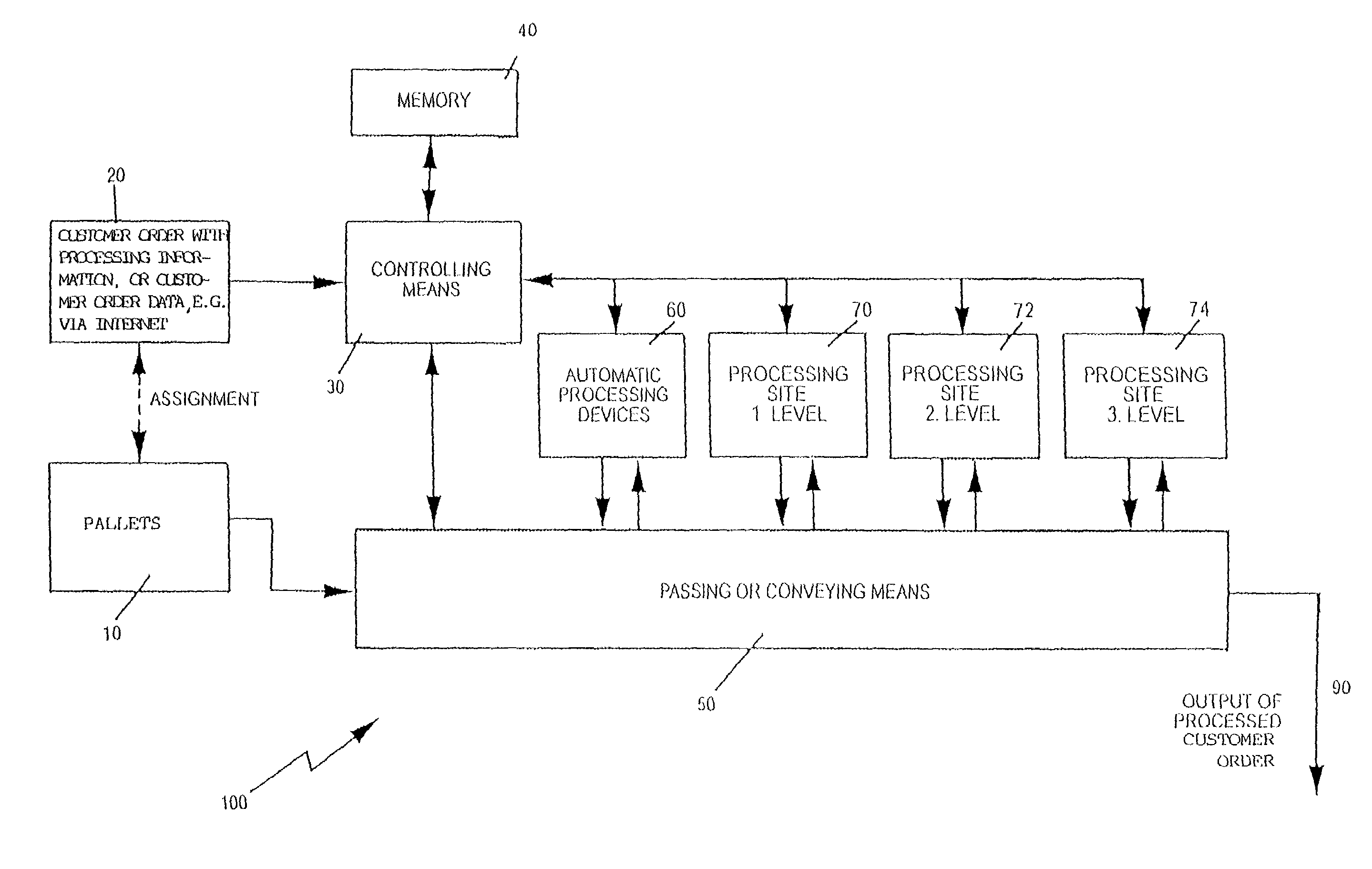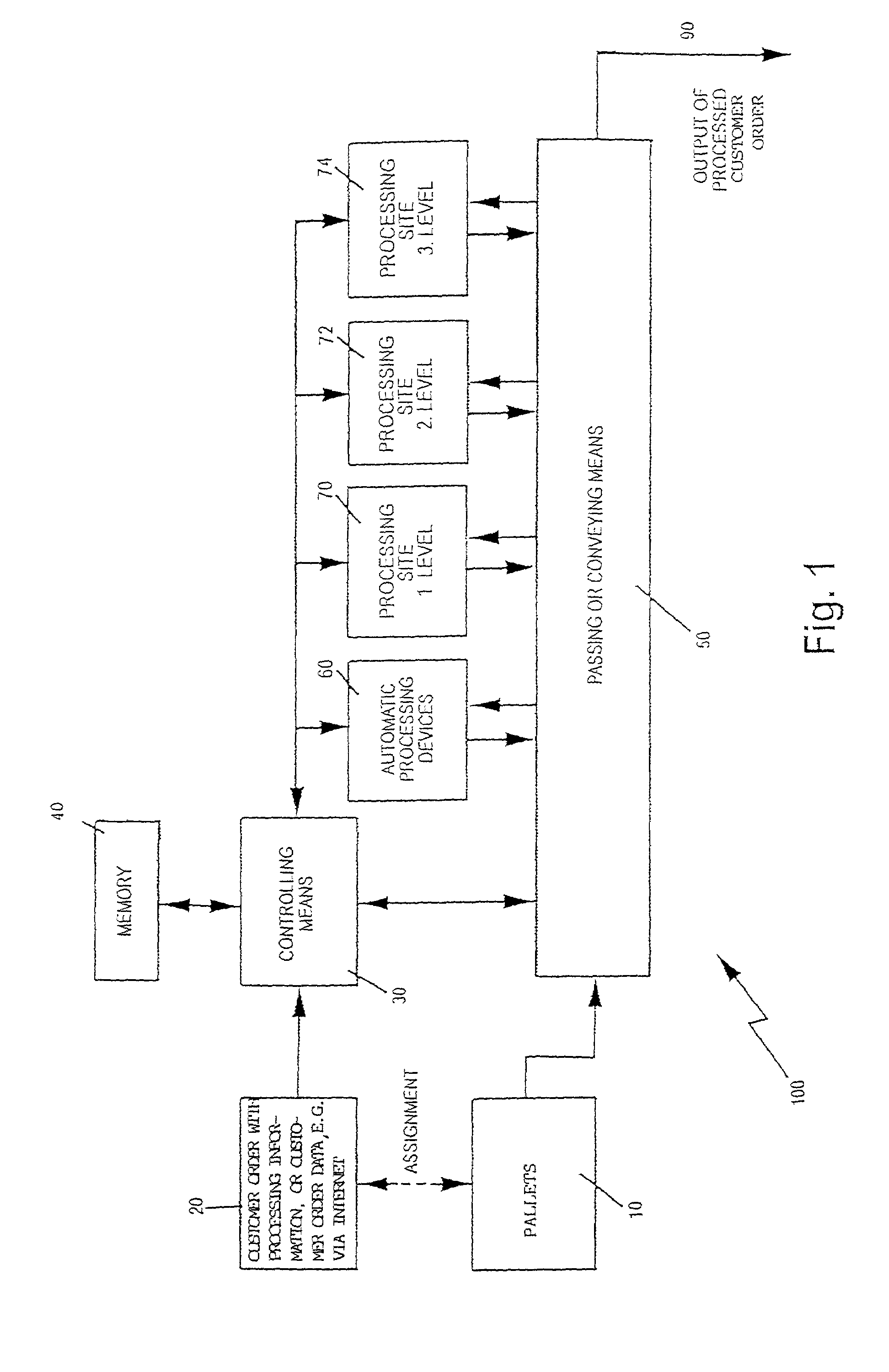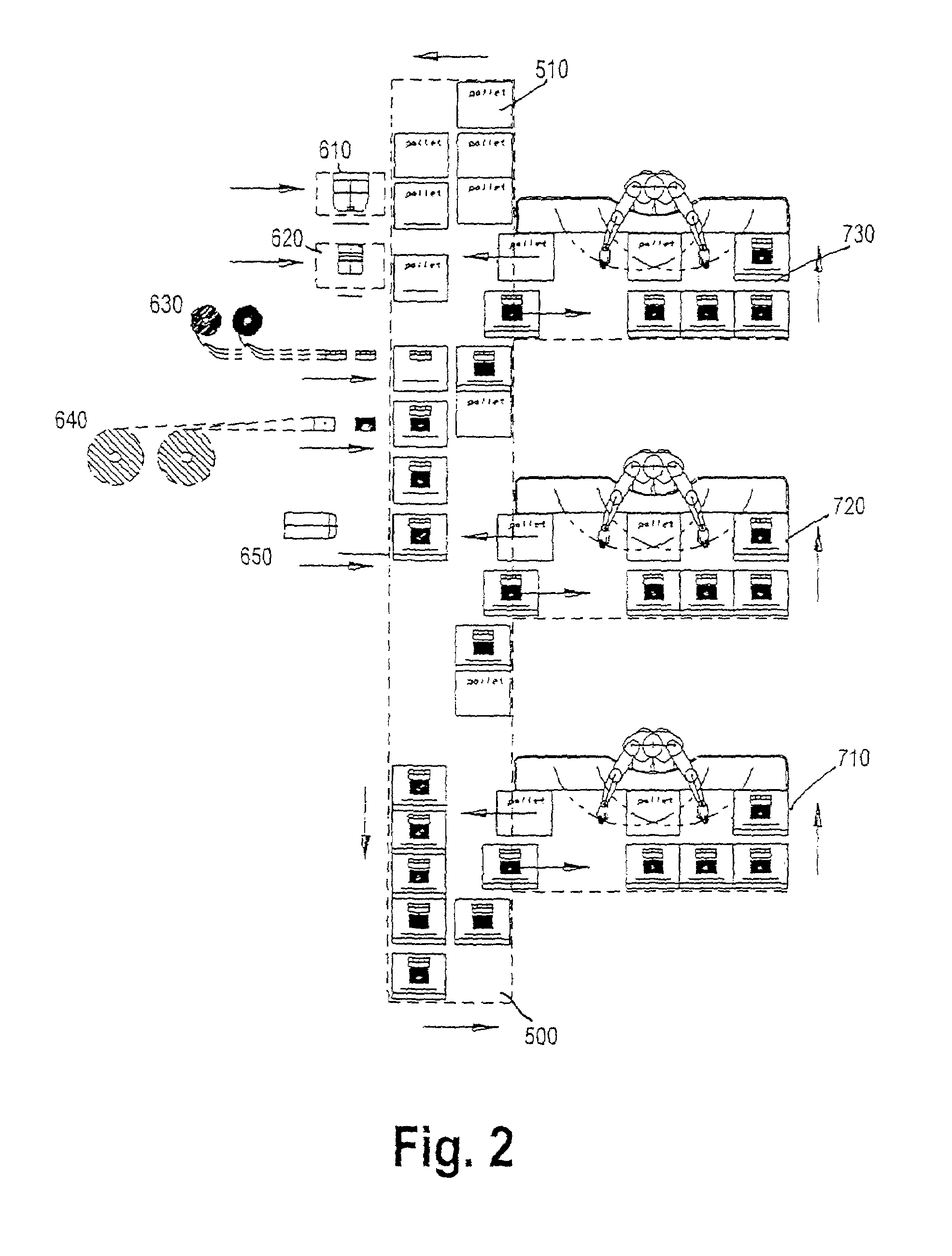Automatic processing of photographs in a photographic laboratory
a technology for photograph processing and laboratory, applied in the field of photograph processing in a photographic laboratory, can solve problems such as the restriction of the processing system, and achieve the effect of facilitating replacement of processing sites and reducing transportation distances of customer orders
- Summary
- Abstract
- Description
- Claims
- Application Information
AI Technical Summary
Benefits of technology
Problems solved by technology
Method used
Image
Examples
Embodiment Construction
[0055]As shown in FIG. 1, customer orders 20 are supplied to a processing system 100. To each customer order, a processing order is assigned. The processing information describes in which way the customer order has to be processed by the processing system 100. In the system, elements of a customer order which are processed are directed to pallets 10. These pallets 10 can be recognised on the basis of some marks, or match codes e.g. a bar code and thus one particular pallet can be related with one particular customer order 20. During processing of said particular customer order 20 in accordance with the processing information, the movement as well as the progress of this customer order can be monitored on the basis of the marks which are assigned to said particular pallet 10.
[0056]The processing system 100 comprises controlling means 30, a memory 40, automatically processing devices 60, semi-automatic processing sites 70, and passing or conveying means 50.
[0057]The customer order 20 ...
PUM
 Login to View More
Login to View More Abstract
Description
Claims
Application Information
 Login to View More
Login to View More - R&D
- Intellectual Property
- Life Sciences
- Materials
- Tech Scout
- Unparalleled Data Quality
- Higher Quality Content
- 60% Fewer Hallucinations
Browse by: Latest US Patents, China's latest patents, Technical Efficacy Thesaurus, Application Domain, Technology Topic, Popular Technical Reports.
© 2025 PatSnap. All rights reserved.Legal|Privacy policy|Modern Slavery Act Transparency Statement|Sitemap|About US| Contact US: help@patsnap.com



